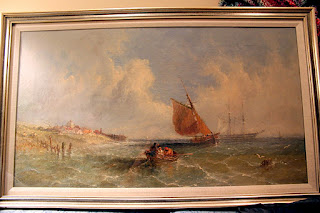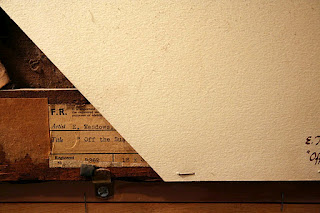TOP 3 Artprice 2011: Having emerged as the world’s strongest art marketplace last year, it comes as no surprise to find China’s two leading artists now holding the top two places in Artprice’s global ranking of artists by auction revenue.br
Bubble fears as Chinese buyers bid up art prices | Marketplace from American Public Media
A few comments by me on the China art market bubble from my interview with Rob Schmitz when I was in Shanghai in June.
Bubble fears as Chinese buyers bid up art prices | Marketplace from American Public Media
Zhang Daqian and Qi Baishi top earners in global auction sales.
Of course, right after I submit my article on the Chinese art market to the Journal of Appraisal Studies, Artprice.com comes out with the latest stats. on China’s place in the global art market. In my article I quoted Thierry Ehrman, the founder of Artprice.com, as saying that in 2010 China accounted for 33% of global fine art sales displacing the U.S. and U.K. and France for the first time since sales had been recorded. I also cited Artprice’s 2010 Top-10 list of artists by auction revenue which included Qi Baishi and Zhang Daqian. At the time Pablo Picasso stood at number 1 and Qi Baishi was number 2. Well, it’s 2012 and Artprice has come out with new stats for 2011. Time to revise again. China is still number 1 in total revenue for fine art but its market share has increased to 39% (from 33% in 2010). The US is number 2 with 25% of the market (down from 30% in 2010). Pablo Picasso has been displaced by Zhang Daqian as the top auction earner ($507 million) followed by Qi Baishi ($445 million). Picasso is now ranked fourth (311.6 million). Bloomberg News quotes Larry Warsh, a NY based collector, as saying it’s not a big surprise, given China’s abundance of cash and rich history of collecting. Also cited as underlying its rapid ascent in the global art marketplace is the nationalist sentiments of Chinese collectors who have their own artist heroes. Well, yeah, but there is more to these sky-high prices than conspicuous consumption and nationalistic fervor…There is market speculation by art investment funds, property flipping, rampant non-payment by Chinese buyers of some of the highest-priced properties, price-ramping and the false attribution of art by Chinese auction houses. The question remains: The Chinese Art Market: Sustainable Growth or Bust??
What’s My Art Worth, Part 2 – Auction House Estimates
In a follow-up to the recent post, “What’s My Art Worth” I think it would be helpful to explain the difference between estimates provided by auction houses and those provided by independent, professional appraisers.
Let’s say you have a landscape painting by a California painter from the 1930s and you want to know what it might bring at auction. You do a little research online and discover that Bonhams & Butterfields has annual auctions in San Francisco for California painting. You go to their website and submit a digital photograph of your painting, its dimensions, where you acquired the piece etc… After a couple of weeks you hear back from them and they are interested in handling the painting in an upcoming auction. They provide an estimate of $3,000-$5,000. It’s important to understand that these estimates are not simply a range of what like paintings have sold for at auction in recent years. Rather these estimates also take into account prospective buyers and what will draw them into bidding on the property. So typically, the estimate will be set low in the hopes that it will attract bidders looking for a bargain. The hoped for scenario is that this will encourage competitive bidding, driving up the price beyond the high end of the estimate.
An independent appraiser compliant with the ethics and standards of USPAP (Uniform Standards of Professional Appraisal Practice) approaches the project from a more objective standpoint. Marketing considerations have no bearing on our analysis. Moreover our fee is set at an hourly or per project rate rather than to the percentage of the appraised value which would obviously lead to inflated valuations. Rather the value conclusion of the painting is derived from an analysis of realized sales of similar properties at a variety of auction houses. Moreover, the appraiser interprets the nuances of the sale to determine why one painting may have sold for significantly more than another similar painting, or why it sold for twice times the estimate, who the bidders were, the history of ownership of the painting etc… The appraiser can also advise you on which auction house would be the best venue for selling your work by evaluating how often artworks by the artist are sold through their showrooms, how successful they have been in realizing realizing high prices relative to other auction houses etc..
For more on professional appraisal practice see the “Art of the Appraisal” in a recent NYTimes article.
http://www.nytimes.com/2011/10/19/business/choosing-experts-to-appraise-collectibles-and-valuables.html
What’s My Art Worth?
In a sign of the times, one of the most frequent queries that we get these days goes something like this: “I was given (inherited, won) a print or painting, sculpture by “John Smith” (or, I don’t know who the artist is but it looks really old) and am curious about what it is worth because I’d like to sell it. Can you help me?”
Before we can answer that question, there is some key information that we need in order to determine if we can help you or, if you have something that is worth an appraiser’s standard fee of upwards of $150 an hour.
Is it original?
By original we mean, is it a unique oil/acrylic/watercolor/drawing or sculpture that is signed by an artist? If you are not sure and if it is in a frame, examine it out of the frame.
Who is the artist?
Look for a signature on the front or the back of the painting, or, if it is a sculpture, on the base. Another reason to take a print or painting out of the frame is that there may be a gallery label on the back identifying the artist, title, date and even price.
What are the dimensions?
Height and width of a two-dimensional work, height, width and depth if a three-dimensional work.
What is the history of ownership?
Where did you or the person from whom you received the artwork acquire the piece? If you don’t know, look for any old appraisals, invoices or certificates.
What is the condition?
The condition of the artwork usually has a significant impact on value. Look for rips, holes, insect infestation, fading, toning, water damage etc… Again, this is another reason to remove an artwork from the frame. Oftentimes artwork that has been in the family for decades has never been reframed, consequently the piece has become degraded due to over-exposure to light, or from non-archival acidic backings.
Do a quick google search with the artist’s name to see if he or she pops up. Or go to one of the fine art databases to see if your artist has enough of a market to be included.
Finally, it is important to understand that the value of an artwork varies according to the purpose of the appraisal. The value assigned to a work for insurance purposes is Replacement Value, typically what you would pay at a gallery. The value assigned to an artwork for donation, estate tax or sales purposes, is known as Fair Market Value, defined by professional appraisal organizations as what a willing buyer and a willing seller would agree is a reasonable price in the open marketplace, usually the auction market.


